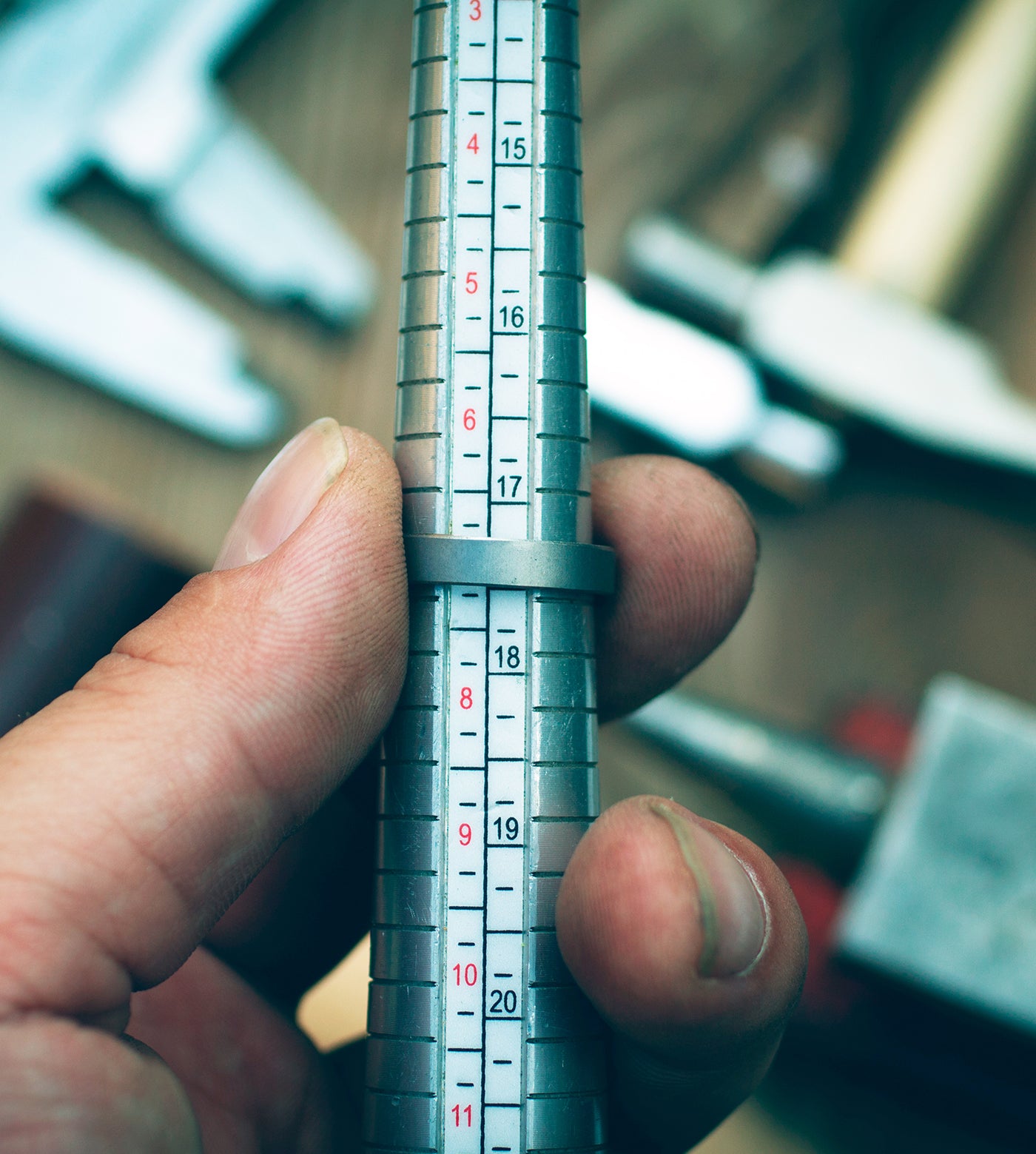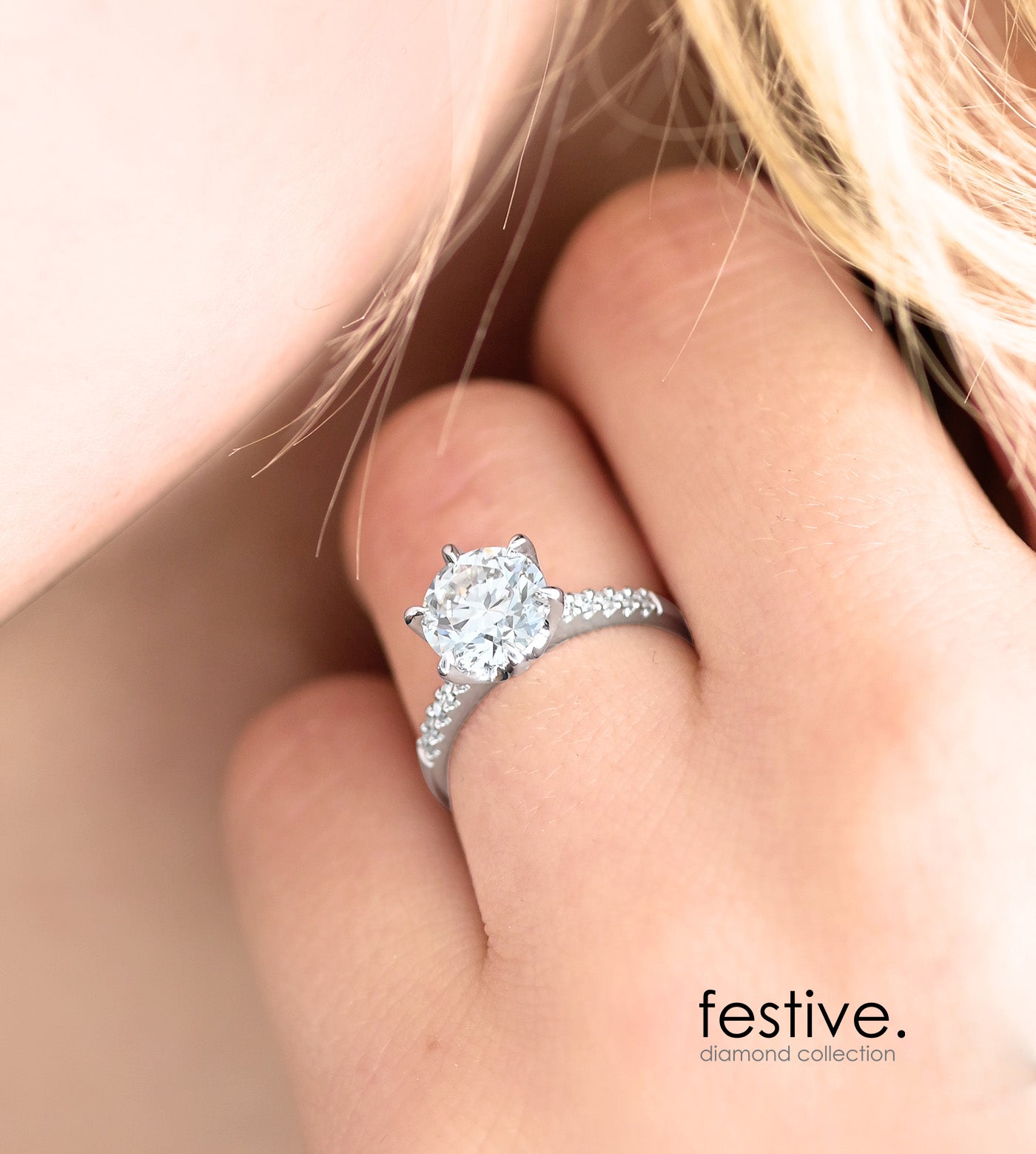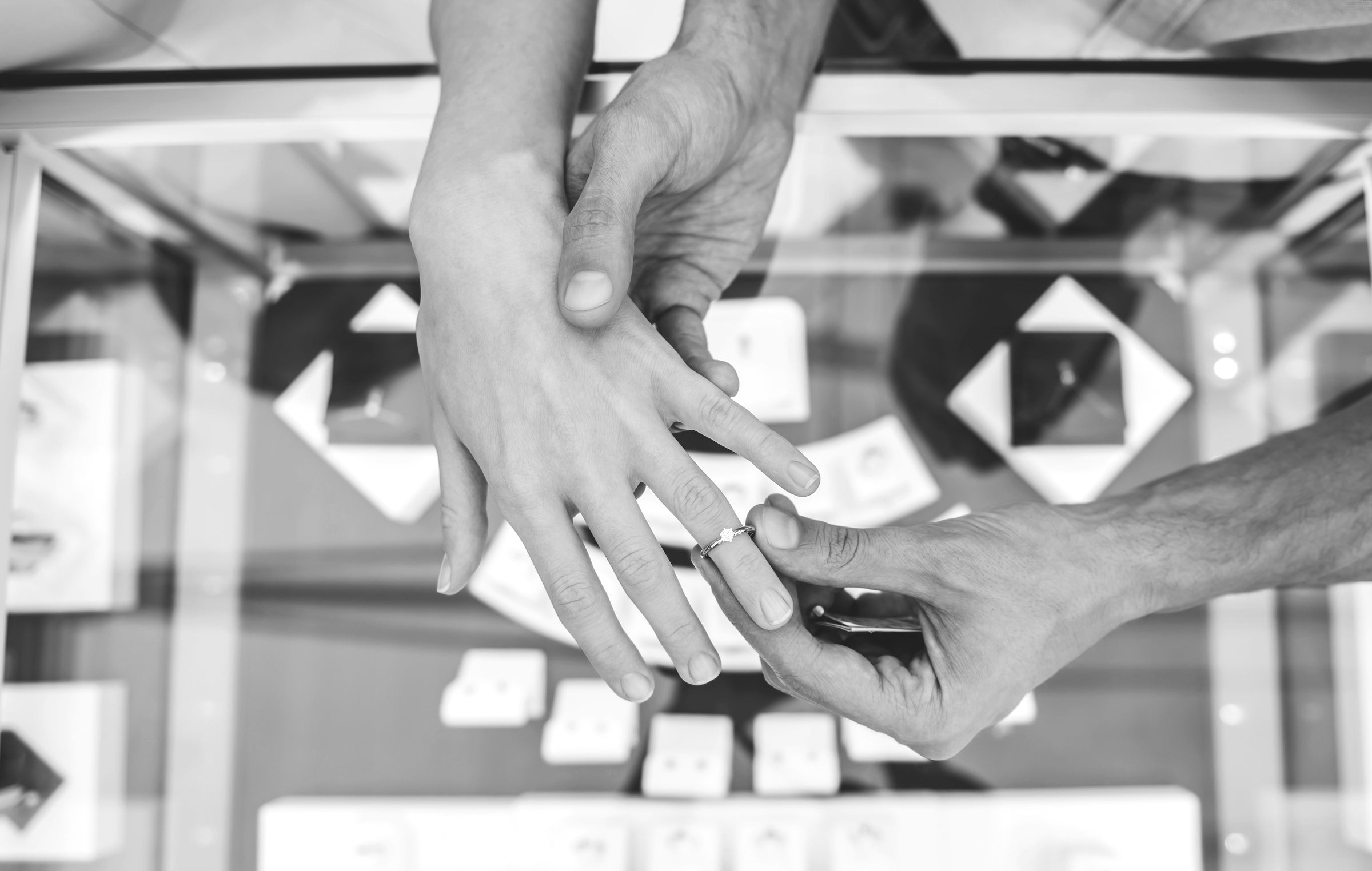TOP 10: What to consider when choosing a ring?
1. For engagement and wedding rings, there is no absolute rule that the rings must be identical, but it is of course nice that they would somehow form a pair with uniform shapes, features or material choices.
2. When buying a valuable ring, do some research into the materials and what the price of the ring is made up of. For example, how different diamond grades and gold content affect the final price.
3. Check carefully that the ring is the right size. Use a measuring ring or an existing ring to find out the size of the ring. The ring should not squeeze on your finger so that you constantly feel like taking it off your finger. If the size is too large, the ring will rotate or seem to run off your finger. The size of the finger can even vary during the same day. Most often in the evening, your fingers tend to be swollen, as well as in hot weather.
4. Choose a ring that looks like you and is in your style, i.e. reflects your personality.
5. With your spouse, choose rings that have something in common that unites you. For example, material, pattern, shape.
6. Think about what kind of everyday use the ring will be put to and consider its practicality and durability in your everyday life.
7. Choose a ring that is not just a trend of the moment, but will last and you will fall in love with it again and again.
8. Spend enough time choosing a ring. Start looking for a ring long enough before the wedding to avoid rushing and to allow time for the ring to be made, engraved and sized.
9. The ring is expected to last. Therefore, invest in quality, both in the materials and in the finishing of the ring.
10. Favour local craftsmanship

Choose your style
Choose a ring that looks like you and reflects your personality. Choose a ring that's not just a trend of the moment, but one that will stand the test of time and make you fall in love with it again and again.

Measure the size carefully
Check carefully that the ring is the right size. Use the measuring rings or an existing ring to find out the size of the ring. The ring should not pinch your finger or feel like it is falling off or dripping from your finger.

Invest in quality
A ring is a purchase that is expected to last. So invest in quality, both in the materials and the finish.
How do I choose the right metal for my ring?
14 carat gold, or 585 parts per thousand , is probably the most commonly used gold alloy in Finland and is suitable for almost all jewellery.14 carat gold contains less gold (58.5%) than 18 carat gold, for example, so it is slightly lighter in weight and therefore less expensive. The 14 carat alloy is also slightly harder than 18 carat, which means it is slightly more resistant to rough use. 14 carat gold can be recommended for both engagement rings and diamond rings.
18 carat gold, i.e. 750 parts per thousand, contains the highest percentage of pure gold (75%) of all alloys commonly used in Finland, i.e. it is nobler and purer than alloys with a lower content. Because 18 carat gold has a higher specific gravity, it is heavier and more valuable than lower-grade alloys. 18 carat gold is widely preferred for precious diamond rings, for example, where the demanding work of setting is required, where its soft and noble nature is enhanced and makes it easier to work.
9 carat gold, or 375 parts per thousand, contains 37.5% fine gold and is alloyed with silver, copper and zinc. 9 carat gold is relatively new in Finland, but has long been widely used abroad because of its lower price. The light and durable 9 carat alloy is particularly suitable for engagement rings, wide and heavy gold rings and more affordable diamond rings. 9 carat gold is a viable option if you want a more impressive ring on a smaller budget.
Platinum is a greyish-white, very dense and tough metal. Platinum, like gold, is the most precious of metals. It is similar in colour to rhodium-plated white gold, but is more durable than white gold in use. It is used in jewellery in almost pure form, with an alloy content of 950 parts per thousand, i.e. 95% of the alloy is pure platinum. In the alloy we use, the remaining 5% of the alloy is fine gold. Casting and working platinum is more challenging than working gold because of its hardness and high melting point. This, together with platinum's higher specific gravity than alloyed gold, makes platinum products more expensive than their gold counterparts. Platinum is mostly used to make more expensive jewellery such as luxury engagement rings and diamond rings.
How do I choose the right diamond for my ring?
G(TW)/I1: The colour of the diamond in this grade is G or Top Wesselton, i.e. unusually colourless. The clarity grade is I1 (or P1), meaning that inclusions in the diamond are clearly visible at 10x magnification and in some cases even to the naked eye. However, the inclusions do not detract from the brilliance of the stone. The very good colour of the diamond and the high quality of the cut compensate for the slightly lower I1 clarity. This diamond quality is a spectacular option for a more affordable budget.
H(W)/SI2: The colour of the diamond in this grade is H or Wesselton, i.e. colourless. The clarity grade is SI2, which means that the diamond has small inclusions that are easily visible at 10x magnification and can be seen by a professional without the use of any tools. However, the inclusions do not affect the brilliance of the stone. With this diamond grade, you get a sparkling diamond at a more affordable price.
H(W)/SI1: The colour of the diamond in this grade is H or Wesselton. The clarity grade is SI1, meaning that the diamond has small inclusions that are easily visible at 10x magnification, but not to the naked eye. The inclusions do not affect the brilliance of the stone. This diamond quality is excellent value for money, which is why we use it as the default quality in our Festive collection.
H(W)/VS1: The colour of the diamond in this grade is H or Wesselton, i.e. colourless. The clarity grade is VS1, meaning that the diamond has very small inclusions that are colourless and difficult to detect when viewed at 10x magnification. A very good quality and clean diamond!
G(TW)/VS1: The colour of the diamond in this grade is G or Top Wesselton, i.e. exceptionally colourless. The clarity grade is VS1, which means that the diamond has very small inclusions that are colourless and difficult to detect when viewed at 10x magnification. Excellent colour and clarity make this a top quality diamond!
Laboratory diamond: laboratory diamonds ( LAB MADE) are man-made diamonds and are created in a laboratory, where the same conditions are simulated as in nature.
Lab-grown diamonds have the same chemical structure and characteristics as natural diamonds. The superior hardness and durability of diamonds are the same for both and only a special ultraviolet light tester can distinguish between them. Even an experienced expert cannot tell the difference between a laboratory diamond and a natural diamond without special equipment. Read more about laboratory diamonds.



